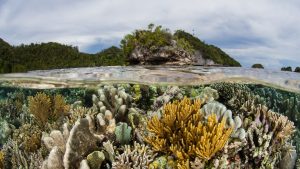Scientists have discovered that the number of supernovae (exploding stars) has closely followed changes in marine genera biodiversity over the last 500 million years.
Extensive studies of fossil records showed that the diversity of life forms varied significantly over geological time. Scientists at the Technical University of Denmark (DTU) aimed to find out how supernovae caused these variations.
The agreement appears after normalising the marine diversity curve by the changes in shallow marine areas along the continental coasts. Shallow marine shelves are relevant since most marine life lives in these areas, and changes in shelf areas open new regions where species can evolve. Therefore, changes in available shallow areas influence biodiversity.
The study, ‘A persistent influence of supernovae on biodiversity over the Phanerozoic,’ was published in Ecology and Evolution.
Figuring out the links between space and climate
“A possible explanation for the link between supernovae and biodiversity is that exploding stars influence Earth’s climate,” explained Henrik Svensmark, a senior researcher at DTU’s Department of Space and one of the paper’s authors.
He continued: “A high number of supernovae leads to a cold climate with a large temperature difference between the equator and polar regions. This results in stronger winds, ocean mixing, and transportation of life-essential nutrients to the surface waters along the continental shelves.”
In their paper, the researchers state that these exploding stars are vital for primary bioproductivity by influencing the transport of nutrients. Gross primary bioproductivity provides energy to our ecological systems, and speculations have suggested that changes in bioproductivity may influence biodiversity.
“The new evidence points to a connection between life on Earth and supernovae, mediated by the effect of cosmic rays on clouds and climate,” Svensmark said.
Unexpectedly, the present results suggest that the diversity of marine animals is influenced by changes in shallow marine areas and supernova frequency. Flooding part of the continents increases the size of shallow margins, thereby creating new niches where species can develop. The present work does not determine what type of speciation occurs.

Cosmic rays cause substantial climate shifts
When heavy supernovae explode, they produce cosmic rays, which are elementary particles with enormous energies. Cosmic rays travel to our Solar System, where some end their journey by colliding with Earth’s atmosphere.
Previous studies by Svensmark and his colleagues show that they become the primary source of ions that help form and grow aerosols required in cloud formation. Since clouds can regulate the solar energy reaching Earth’s surface, the cosmic-ray-aerosol-cloud influences climate. Evidence shows substantial climate shifts when the intensity of cosmic rays changes by several hundred percent over millions of years.









